Mar 16, 2015 | Video Reviews
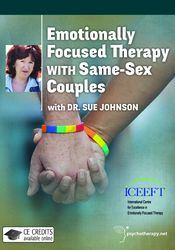 Since its inception in the early 1980s, Emotionally Focused Therapy (EFT) has given therapists a fresh approach for couples counseling. Developed by Dr. Sue Johnson (professor emerita at the University of Ottawa and founder of the International Centre for Excellence in Emotionally Focused Therapy [ICEEFT]) and Dr. Les Greenberg (professor of psychology at York University, Toronto), EFT focuses on the attachment bond between the couple and looks to understand how surface emotions expressed in conflict (what Johnson describes as dreadful dances of negative interactions) are often disguised cries for deeper understanding and a desire for greater intimacy. As the name suggests, this form of therapy focuses on emotions, not cognitions. By untangling the surface emotions and their underlying meaning, the counselor can help the couple identify each step they take in conflicts, deescalate conflicts, identify unmet attachment needs, and restructure interactions so that they learn to bond and meet each other’s deepest needs. The result is a safe and secure attachment bond.
Since its inception in the early 1980s, Emotionally Focused Therapy (EFT) has given therapists a fresh approach for couples counseling. Developed by Dr. Sue Johnson (professor emerita at the University of Ottawa and founder of the International Centre for Excellence in Emotionally Focused Therapy [ICEEFT]) and Dr. Les Greenberg (professor of psychology at York University, Toronto), EFT focuses on the attachment bond between the couple and looks to understand how surface emotions expressed in conflict (what Johnson describes as dreadful dances of negative interactions) are often disguised cries for deeper understanding and a desire for greater intimacy. As the name suggests, this form of therapy focuses on emotions, not cognitions. By untangling the surface emotions and their underlying meaning, the counselor can help the couple identify each step they take in conflicts, deescalate conflicts, identify unmet attachment needs, and restructure interactions so that they learn to bond and meet each other’s deepest needs. The result is a safe and secure attachment bond.
For the most part, EFT has been used to help heterosexual couples improve their relationships. But as the landscape of societal and cultural norms change, counselors can expect to see more gay, lesbian and transgendered couples seeking guidance for relationship struggles. To help counselors cope with the growing tide of same-sex couples seeking services, ICEEFT and Psychotherapy.net present Emotionally Focused Therapy with Same-Sex Couples. This useful video shows Dr. Johnson in action with two same-sex couples (one male couple and one female couple) who are in different stages of reestablishing their damaged attachment bonds. The demonstrations are bookended by conversations between Johnson and each couple’s regular counselor. The video concludes with a very useful conversation in which Johnson and three other counselors discuss the particular nuances of working with same-sex couples.
This video is instructive on two counts. First, for the EFT novice, it shows the master in action. Johnson ably demonstrates two of the three primary stages of EFT—deescalating conflict and restructuring the dance of conflict so that each partner can begin to meet the other’s attachment needs. The stages are the same whether the couple is heterosexual or same-sex, and it is illuminating to watch Johnson review the stages and then help clients reach the stages. In addition, this video also offers insight into the particular issues of same-sex counseling. Counselors who are new to working with same-sex couples—especially heterosexual counselors—should be aware that gay and lesbian couples bring not only the usual conflicts and foibles of relationships into therapy, but also a history of societal indifference and sometimes familial disapproval. As Johnson and her colleagues note, gay and lesbian partners often are even more disconnected from their attachment needs than their heterosexual counterparts. A lifetime of shaming, disapproval from family and friends, and repressing natural desires can adversely affect a person’s ability to fully trust another. Often gay and lesbian youth lack a secure attachment figure—someone to understand and offer warm support—and the lack of this bond makes future relationships tenuous. Johnson encourages the viewer to speak openly about issues of sexuality with same-sex couples, to avoid assumptions about their experiences and to make contact with the trauma each partner may have had when coming out. Attachment can be hard for straight couples, Johnson says, and building secure attachment for couples who grew up hearing that homosexuality was wrong can be even more difficult. That difficulty should be made explicit. As one of the video’s featured counselors quips, counselors working with same-sex couples need to talk about the “pink elephant” in the room.
Even profoundly, the video addresses a common stereotype about same-sex relationships, namely that monogamy is rare in homosexual relationships, which the counselors report is not necessarily true. The need for connection is universal, and now gay and lesbian couples are entering into more traditional forms of relationship (e.g., marriage) than ever before. The video features one couple who have an open relationship, but as the featured counselors say, that arrangement is not necessarily contraindicative of EFT (active affairs outside the “rules” of the relationship are, however). Counselors working with gay and lesbian couples must look beyond the particulars of the relationship (e.g., monogamous, open) to examine the bond between partners. What matters is strengthening the bond. Ultimately, partners want their emotions to be understood, and EFT helps couples reach that goal. This video is highly recommended.
Reviewed by: Eugene Naughton, NCC, professional counselor, Greensboro, North Carolina.
Reel Concepts for Susan Johnson, Inc. (Producer). (2014). Emotionally focused therapy with same-sex couples with Dr. Sue Johnson [DVD]. (Available in DVD and video streaming from http://www.psychotherapy.net/video/emotionally-focused-therapy-gay-lesbian-couples)
Available in DVD and streaming format as part of video subscription at Psychotherapy.net/subscriptions.
The Professional Counselor
http://tpcjournal.nbcc.org
Mar 11, 2015 | Book Reviews
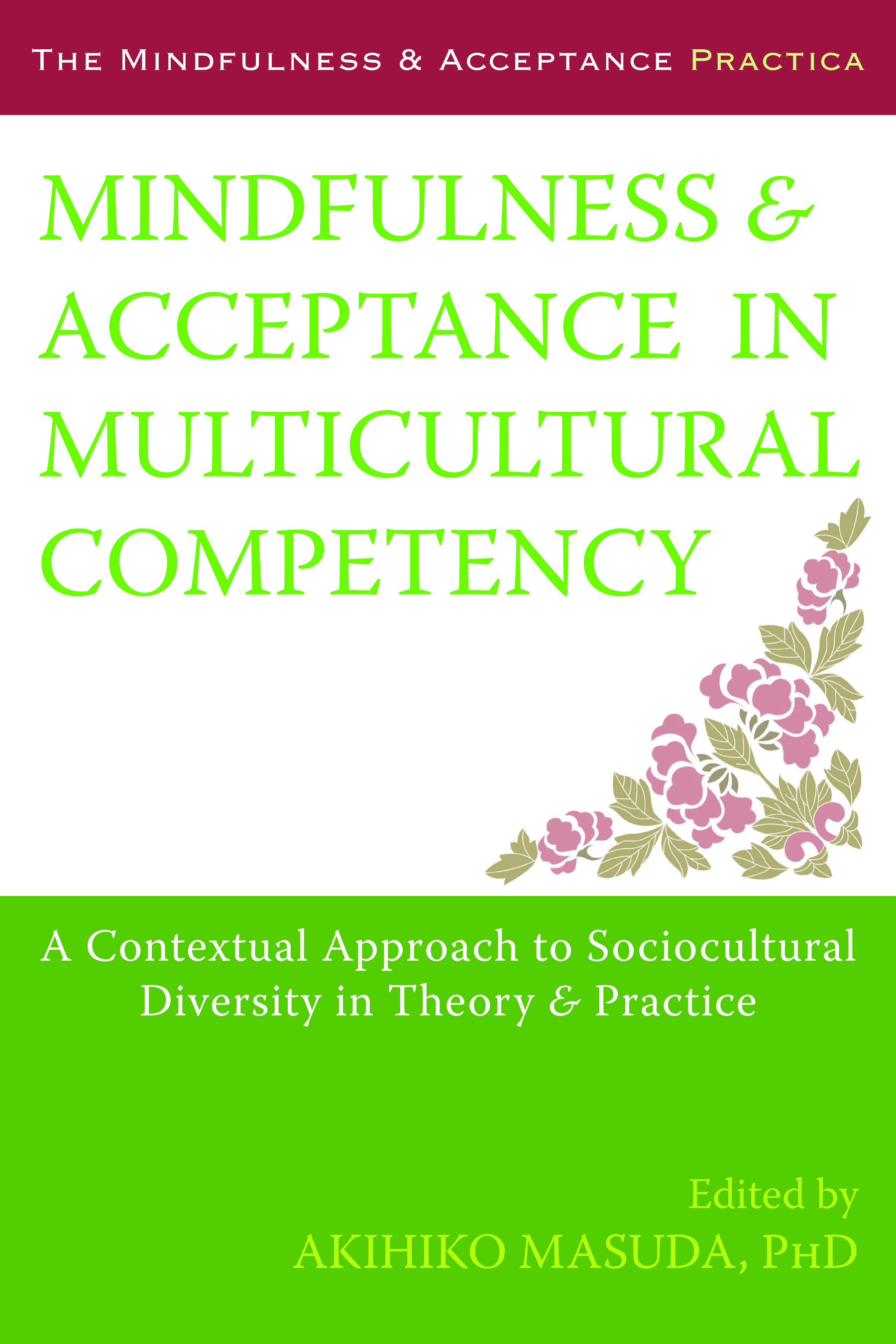 Mindfulness and Acceptance in Multicultural Competency by Akihiko Masudo is part of The Mindfulness and Acceptance Practica series. This groundbreaking volume focuses on a contextual approach to multicultural theory and practice. With the emergence of new cognitive and behavioral therapies that integrate mindfulness and acceptance principles, this book represents a significant contribution to the exploration of how these principles account for culture and diversity, the particular ways in which acceptance and mindfulness-based methods can be adapted culturally through specific evidenced-based approaches, and the application of mindfulness and acceptance to some issues commonly linked to the experience of diversity.
Mindfulness and Acceptance in Multicultural Competency by Akihiko Masudo is part of The Mindfulness and Acceptance Practica series. This groundbreaking volume focuses on a contextual approach to multicultural theory and practice. With the emergence of new cognitive and behavioral therapies that integrate mindfulness and acceptance principles, this book represents a significant contribution to the exploration of how these principles account for culture and diversity, the particular ways in which acceptance and mindfulness-based methods can be adapted culturally through specific evidenced-based approaches, and the application of mindfulness and acceptance to some issues commonly linked to the experience of diversity.
Part I of the book addresses the complexity of multicultural issues with an emphasis on how mindfulness and acceptance principles, which are based on a functional-context perspective, represent a valid alternative to the classic content-based approach (awareness, knowledge and skills) in promoting multicultural competence. As such, the contributors argue that in order to understand and promote cultural competency, there is a need to develop a functional contextualism, which demands an understanding of the moment-by-moment and relational nature of the counseling experience, as well as an acknowledgment that both counselor and client are contextual beings.
Part II of the book focuses on the cultural competency and cultural adaptation of Dialectical Behavior Therapy, Mindfulness-Based Cognitive Therapy, and Acceptance and Commitment Therapy. A central premise of this section is that these approaches are functional, contextual and process-focused, and as such, they facilitate cultural competency. The book presents specific examples of how these therapies can be contextually adapted to the client’s sociocultural background.
Part III of this volume illustrates the use of mindfulness- and acceptance-based principles and interventions in general contexts of multicultural practice and training, as well as in addressing specific issues. The beginning of this section illustrates the cultural adaptation of mindfulness- and acceptance-based approaches for non-English speakers. The authors’ main point is that the adaptation of intervention protocols, rather than simply attending to issues of content, must attend to the functional and contextual reality of the clients. The next part of this section focuses on the use of mindfulness and acceptance principles in multicultural competency training. The authors’ basic premise is that acceptance- and mindfulness-based approaches can reduce responses that interfere with multicultural training and lead to intrinsic motivation for developing multicultural competency. The rest of this section focuses on how mindfulness and acceptance principles and interventions can be used to address specific issues associated with the experience of diversity such as spirituality, prejudice and shame. The contributors’ main ideas reflect the need to emphasize the common ground between prominent spiritual traditions and acceptance- and mindfulness-based therapies, the importance of increasing psychological flexibility, the relevance of focusing on the verbal processes that underlie stigma rather than its content, the importance of promoting intrinsic and prosocial anti-stigma actions, and the need to integrate compassion-based interventions that promote quality of life.
As a whole, this book represents a valuable addition to the classic content-based approaches to building multicultural competency. Mindfulness and acceptance principles are highlighted as useful tools in the process of understanding and conceptualizing cultural issues. Mindfulness- and acceptance-based approaches are examined based on their cultural competency as well as their great potential for multicultural adaptation. Finally, mindfulness and acceptance principles and interventions are presented as significant resources for facilitating change in the context of issues that are relevant to specific minorities.
In general, the authors succeed in illustrating the enhancing role that mindfulness- and commitment-based principles and interventions have in the process of conceptualizing and developing cultural competency. Their demonstration of the adaptability of specific approaches is valuable but somewhat limited, mostly due to the low availability of research and experience related to the implementation of these approaches with diverse populations. In my opinion, this volume’s greatest contribution is its illustration, with specific case examples, of the groundbreaking potential that mindfulness- and commitment-based principles and interventions have in the change process of those affected by issues such as stigma, discrimination and prejudice.
Reviewed by: Raul Machuca, Barry University, Miami Shores, FL.
Masuda, A. (Ed.). (2014). Mindfulness and acceptance in multicultural competency. Oakland, CA: New Harbinger.
http://tpcjournal.nbcc.org
Mar 11, 2015 | Book Reviews
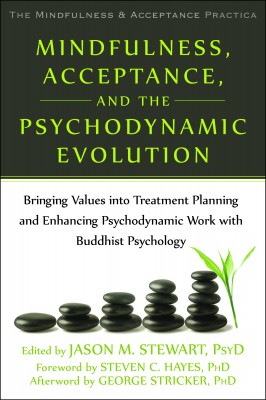 Mindfulness, Acceptance, and the Psychodynamic Evolution (2014) is a theoretical blending of mindfulness-based theory and contemporary psychodynamic thinking, a book with much to offer counseling professionals. The text begins with a foreword, preface and introduction, that describe the evolution of third wave cognitive-behavior therapy (e.g., acceptance and commitment therapy, dialectical behavior therapy), as well as current theory in psychodynamic therapy (e.g., functional analytic psychotherapy, relational psychodynamic perspectives). The authors then move to describing the role of theory integration, and posit mindfulness as a common therapeutic factor.
Mindfulness, Acceptance, and the Psychodynamic Evolution (2014) is a theoretical blending of mindfulness-based theory and contemporary psychodynamic thinking, a book with much to offer counseling professionals. The text begins with a foreword, preface and introduction, that describe the evolution of third wave cognitive-behavior therapy (e.g., acceptance and commitment therapy, dialectical behavior therapy), as well as current theory in psychodynamic therapy (e.g., functional analytic psychotherapy, relational psychodynamic perspectives). The authors then move to describing the role of theory integration, and posit mindfulness as a common therapeutic factor.
Throughout the next chapters, the authors expand on the psychodynamic perspective and mindfulness in addition to the role of curiosity in the therapist’s stance in session and the therapeutic relationship. Particularly poignant are chapters 3, 4 and 5, which are almost exclusively devoted to Buddhist thought and its connection to modern mindfulness and psychodynamic theory. Chapter 6 describes the concept of mentalization and mindfulness, with connections for enhancing mentalization in children through play therapy. Chapter 7 contains a personal account of mindfulness practice from one of the authors. Chapters 8–10 focus heavily on the functional contextual theories of acceptance and commitment therapy and dialectical behavioral therapy, and their associations with mindfulness and psychoanalysis. Chapter 11 guides the reader through the nuances of both psychoanalysis and acceptance and commitment therapy, with the authors providing commentary from both perspectives applied to clinical case vignettes. The concluding chapter, 12, describes the five guidelines of functional analytic psychotherapy. This chapter also includes the role of values and a discussion of relational psychodynamic thought.
Throughout this text, modern psychodynamic theory is applied to mindfulness concepts, which include acceptance, nonjudgmental awareness, curiosity, letting go and the power of the present moment. The philosophical epistemology of mindfulness and psychodynamic theory are included within the text, with respect to individuals’ unique social construction of their contexts. There are roughly 18 separate clinical case scenarios included within this text, which the authors use to skillfully demonstrate the topics of each chapter.
Mindfulness, Acceptance, and the Psychodynamic Evolution is a well authored text; each individual contributor adds more to the narrative and enhances the reader’s experience. Regardless of whether one’s theoretical orientation falls within the psychodynamic framework, every clinician has something to gain from reading this book. The blossoming research on mindfulness within the field of counseling demonstrates the importance of the topic, and reading this book is a worthwhile venture. The text is very thorough, with delicate care taken to provide the reader with a wealth of accessible information. A strong point of Mindfulness, Acceptance, and the Psychodynamic Evolution is the outstanding number of case studies included, which provide both the conceptual framework and strategies for clinical application.
As stated above, a counselor need not subscribe to a psychodynamic theoretical orientation to benefit from this text; however, the book does contain information on advanced modern psychodynamic theory and mindfulness. If the reader is opposed to psychoanalytic thinking or unaware of its concepts, the reading experience may be more difficult to comprehend. However, the authors adeptly deconstruct the specifics of modern psychodynamic and mindfulness concepts, making comprehension of psychodynamic and mindfulness theories possible for readers less experienced in either theory.
This text has direct application for various types of counseling professionals, particularly those with clinical, supervisory and consulting roles. The authors provide the conceptual narrative germinated with clinical case vignettes, perfect for therapists providing direct client services. Mindfulness, Acceptance, and the Psychodynamic Evolution includes cases with children, adolescents and adults, furthering the utility of the book.
Stewart, J. M. (Ed.). (2014). Mindfulness, acceptance, and the psychodynamic evolution: Bringing values into treatment planning and enhancing psychodynamic work with Buddhist psychology. Oakland, CA: New Harbinger.
Reviewed by: George E. Harrington III, Barry University, Miami, FL.
The Professional Counselor
http://tpcjournal.nbcc.org
Mar 11, 2015 | Book Reviews
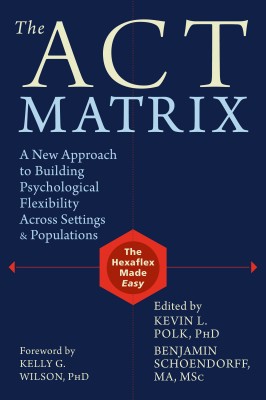 The ACT Matrix: A New Approach to Building Psychological Flexibility Across Settings and Populations is a refreshing user-friendly book that transforms a somewhat esoteric theoretical framework (Acceptance and Commitment Therapy, or ACT) directly into an accessible therapeutic tool for counselors. Kevin Polk and Benjamin Schoendorff present a very practical edited text that features contributions from authors who share their direct experiences with using an accessible version of ACT in their work with a variety of clients and presenting concerns.
The ACT Matrix: A New Approach to Building Psychological Flexibility Across Settings and Populations is a refreshing user-friendly book that transforms a somewhat esoteric theoretical framework (Acceptance and Commitment Therapy, or ACT) directly into an accessible therapeutic tool for counselors. Kevin Polk and Benjamin Schoendorff present a very practical edited text that features contributions from authors who share their direct experiences with using an accessible version of ACT in their work with a variety of clients and presenting concerns.
The book begins with a history of the matrix, which in essence is a versatile version of ACT. ACT is a philosophical and theoretical framework that, simply put, is designed to help clients live with (rather than eradicate) troubling psychological symptoms, while at the same time acting in a way that brings meaning and purpose to their lives. While ACT is an evidenced-based practice that has shown great utility across a variety of therapeutic arenas, its main tenets can prove challenging for those who (a) have been trained to help clients eliminate maladaptive symptomology and/or (b) prefer a structured set of helping skills that follow a predictable pattern. For these reasons, I sometimes caution graduate counseling students against using ACT too soon in their professional careers, prompting them to revisit ACT when they (a) are no longer encumbered by their own internal perfectionistic conflicts and (b) are ready for a system of helping that meets clients in the midst of their pain, and helps them to accept their current circumstances rather than trying to avoid them. At least, these were my standard set of cautions; but now I can recommend the matrix.
To quote the book itself, “The matrix is an interactive diagram for increasing psychological flexibility in almost any context at any time” (Polk & Schoendorff, 2014, p. 1). After discussing the origins of the matrix and the underlying principles of ACT, the editors turn to experts in a variety of clinical arenas who have successfully adapted the matrix in their work with clients. These clinicians share their expertise in using the matrix with presenting issues such as addictions, chronic pain, eating disorders, chronic and severe disorders (e.g., depression, anxiety, self-destructive behaviors), and post-traumatic stress disorder (PTSD). In addition to the examples of these presenting concerns, the book offers practical implications for using the matrix in such setting as couples counseling, psychiatric practice and case consultation. The authors even dedicate chapters to using the matrix with the general public, in the school systems and in the business world. Using a variety of clinical case studies, easy-to-follow (and replicate) graphics, and step-by-step instructions, the authors lead the reader in very practical exercises that can be used directly with struggling clients.
The ACT Matrix would be appropriate to use with graduate students in a variety of courses, including those that are fairly general (e.g., diagnosis and treatment, advanced counseling skills, clinical experience courses such as practicum and internship) as well as those that are more clinically specific (e.g., addiction counseling, couples counseling, crisis/trauma counseling). For practicing clinicians looking to build their professional competence in order to work with clients who appear to be stuck in the experience of their symptoms, The ACT Matrix offers numerous exercises that will prove to be quite effective.
Reviewed by: W. Bryce Hagedorn, NCC, MAC, University of Central Florida, Orlando, FL.
Polk, K. L., & Schoendorff, B. (Eds.). (2014). The ACT Matrix: A new approach to building psychological flexibility across settings and populations. Oakland, CA: New Harbinger.
The Professional Counselor
http://tpcjournal.nbcc.org
Mar 11, 2015 | Book Reviews
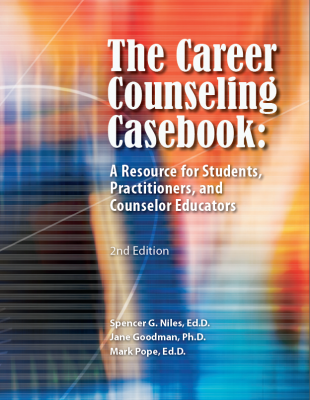 The Career Counseling Casebook, edited by Spencer G. Niles, Jane Goodman and Mark Pope, is a second-edition compendium of vignettes that encompass virtually all aspects of career counseling. The editors address all areas of life–career development within a wide range of contexts, and present these areas to represent lifespan career development issues for work with clients of all ages. Case contexts include elementary, secondary and higher education; vocational and rehabilitative counseling; and agency, nonprofit and private practice environments.
The Career Counseling Casebook, edited by Spencer G. Niles, Jane Goodman and Mark Pope, is a second-edition compendium of vignettes that encompass virtually all aspects of career counseling. The editors address all areas of life–career development within a wide range of contexts, and present these areas to represent lifespan career development issues for work with clients of all ages. Case contexts include elementary, secondary and higher education; vocational and rehabilitative counseling; and agency, nonprofit and private practice environments.
Responses to each case are provided by leaders throughout the counseling profession, who present varying perspectives on the issues presented in the cases. The responses are not textbook-style theoretical examples. Instead they incorporate integrative approaches that are more realistic and relevant to counselors’ everyday work with clients. Respondents sometimes agree with each other and at other times differ significantly in their approaches to counseling, providing ideal opportunities for discussion with counseling students in either the classroom or as part of internships and supervision.
The new edition of The Career Counseling Casebook addresses contemporary, timely concerns about career from a diverse group of clients. The case descriptions provide adequate background information for each client so that the reader can gain understanding of his or her values and perspective, but the case descriptions also clearly delineate boundaries between career and other types of counseling. The case studies are broadly based and encompass all aspects of diversity, including age, which makes this book an excellent resource for teaching students who are studying all areas of specialization within the counseling profession. The inclusion of a wide range of gender identifications and sexual preferences is particularly valuable in working with counseling students. In addition, the Casebook is a prized resource for career counselors working with the growing number of clients in mid-career and encore careers. Respondents incorporate relevant and timely utilization of assessments into many of the cases. The respondents also provide a multitude of resources that students and practitioners may use to learn more.
A weakness of the Casebook is the lack of consistency in its response format, which makes it somewhat difficult to compare responses across cases. For example, comparing the application of theoretical framework among the cases can be challenging. Also, in one case, a respondent appears to resort to generalizations regarding a client and draws seemingly presumptuous conclusions. A final limitation—maintaining the timeliness and relevance of the cases—is unavoidable, but can be addressed with consistent revisions to The Career Counseling Casebook.
One significant strength of this new resource is that it moves beyond the abstract to the real practice of counseling; the Casebook bridges the gap between the theoretical and clinical applications. The editors integrate theoretical approaches into many cases by presenting them as realistic situations ranging from simple to quite complex. The Casebook reiterates and advances the National Career Development Association’s Career Counseling Competencies Minimum Competencies for Multicultural Career Counseling and Development. Furthermore, the Casebook’s story-telling format is engaging and presents many of the challenges facing career counselors throughout their careers.
Reviewed by: Peggy Dupey, NCC, University of Nevada School of Medicine, Reno, NV.
Niles, S. G., Goodman, J., & Pope, M. (2013). The career counseling casebook: A resource for students, practitioners, and counselor educators (2nd ed.). Broken Arrow, OK: National Career Development Association.
The Professional Counselor
http://tpcjournal.nbcc.org
 Since its inception in the early 1980s, Emotionally Focused Therapy (EFT) has given therapists a fresh approach for couples counseling. Developed by Dr. Sue Johnson (professor emerita at the University of Ottawa and founder of the International Centre for Excellence in Emotionally Focused Therapy [ICEEFT]) and Dr. Les Greenberg (professor of psychology at York University, Toronto), EFT focuses on the attachment bond between the couple and looks to understand how surface emotions expressed in conflict (what Johnson describes as dreadful dances of negative interactions) are often disguised cries for deeper understanding and a desire for greater intimacy. As the name suggests, this form of therapy focuses on emotions, not cognitions. By untangling the surface emotions and their underlying meaning, the counselor can help the couple identify each step they take in conflicts, deescalate conflicts, identify unmet attachment needs, and restructure interactions so that they learn to bond and meet each other’s deepest needs. The result is a safe and secure attachment bond.
Since its inception in the early 1980s, Emotionally Focused Therapy (EFT) has given therapists a fresh approach for couples counseling. Developed by Dr. Sue Johnson (professor emerita at the University of Ottawa and founder of the International Centre for Excellence in Emotionally Focused Therapy [ICEEFT]) and Dr. Les Greenberg (professor of psychology at York University, Toronto), EFT focuses on the attachment bond between the couple and looks to understand how surface emotions expressed in conflict (what Johnson describes as dreadful dances of negative interactions) are often disguised cries for deeper understanding and a desire for greater intimacy. As the name suggests, this form of therapy focuses on emotions, not cognitions. By untangling the surface emotions and their underlying meaning, the counselor can help the couple identify each step they take in conflicts, deescalate conflicts, identify unmet attachment needs, and restructure interactions so that they learn to bond and meet each other’s deepest needs. The result is a safe and secure attachment bond. Mindfulness and Acceptance in Multicultural Competency by Akihiko Masudo is part of The Mindfulness and Acceptance Practica series. This groundbreaking volume focuses on a contextual approach to multicultural theory and practice. With the emergence of new cognitive and behavioral therapies that integrate mindfulness and acceptance principles, this book represents a significant contribution to the exploration of how these principles account for culture and diversity, the particular ways in which acceptance and mindfulness-based methods can be adapted culturally through specific evidenced-based approaches, and the application of mindfulness and acceptance to some issues commonly linked to the experience of diversity.
Mindfulness and Acceptance in Multicultural Competency by Akihiko Masudo is part of The Mindfulness and Acceptance Practica series. This groundbreaking volume focuses on a contextual approach to multicultural theory and practice. With the emergence of new cognitive and behavioral therapies that integrate mindfulness and acceptance principles, this book represents a significant contribution to the exploration of how these principles account for culture and diversity, the particular ways in which acceptance and mindfulness-based methods can be adapted culturally through specific evidenced-based approaches, and the application of mindfulness and acceptance to some issues commonly linked to the experience of diversity. Mindfulness, Acceptance, and the Psychodynamic Evolution (2014) is a theoretical blending of mindfulness-based theory and contemporary psychodynamic thinking, a book with much to offer counseling professionals. The text begins with a foreword, preface and introduction, that describe the evolution of third wave cognitive-behavior therapy (e.g., acceptance and commitment therapy, dialectical behavior therapy), as well as current theory in psychodynamic therapy (e.g., functional analytic psychotherapy, relational psychodynamic perspectives). The authors then move to describing the role of theory integration, and posit mindfulness as a common therapeutic factor.
Mindfulness, Acceptance, and the Psychodynamic Evolution (2014) is a theoretical blending of mindfulness-based theory and contemporary psychodynamic thinking, a book with much to offer counseling professionals. The text begins with a foreword, preface and introduction, that describe the evolution of third wave cognitive-behavior therapy (e.g., acceptance and commitment therapy, dialectical behavior therapy), as well as current theory in psychodynamic therapy (e.g., functional analytic psychotherapy, relational psychodynamic perspectives). The authors then move to describing the role of theory integration, and posit mindfulness as a common therapeutic factor.
 The Career Counseling Casebook, edited by Spencer G. Niles, Jane Goodman and Mark Pope, is a second-edition compendium of vignettes that encompass virtually all aspects of career counseling. The editors address all areas of life–career development within a wide range of contexts, and present these areas to represent lifespan career development issues for work with clients of all ages. Case contexts include elementary, secondary and higher education; vocational and rehabilitative counseling; and agency, nonprofit and private practice environments.
The Career Counseling Casebook, edited by Spencer G. Niles, Jane Goodman and Mark Pope, is a second-edition compendium of vignettes that encompass virtually all aspects of career counseling. The editors address all areas of life–career development within a wide range of contexts, and present these areas to represent lifespan career development issues for work with clients of all ages. Case contexts include elementary, secondary and higher education; vocational and rehabilitative counseling; and agency, nonprofit and private practice environments.